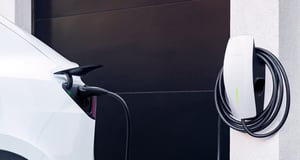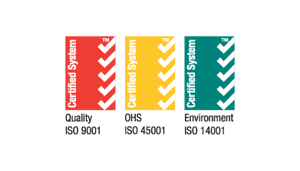
EV Home Charging Installation
We are Australia's Leading EV Charging Experts
Platinum Electricians is a trusted installer for leading EV charging equipment suppliers across Australia, offering high-quality installations backed by a lifetime workmanship warranty and comprehensive after-sales support. We ensure all installations meet strict safety and inspection standards and provide the equipment manufacturer with installation details for quality control.
We are a preferred installer for multiple charging equipment suppliers across Australia and are leaders in delivering quality installations.




3 EASY STEPS TO YOUR CHARGER INSTALLATION
This tailored approach ensures a seamless and efficient installation, catering to the specific needs of each client, from planning through to the maintenance phase.
 1. Easy Online BookingComplete the online form, make your payment, and choose your preferred date, all in one simple process.
1. Easy Online BookingComplete the online form, make your payment, and choose your preferred date, all in one simple process..svg) 2. Professional Installation
2. Professional InstallationOur licensed electricians will install your EV wall charger, ensuring it meets all safety and compliance standards.
 3. Ongoing Support
3. Ongoing SupportBenefit from our lifetime workmanship warranty and responsive after-sales support for any questions or assistance.

BOOKING FORM
EV Charger Installation: $1,200 + GST*
To purchase an installation, please complete the form below and make a payment on the following page.
ELECTRIC VEHICLE FAQs
Three-phase chargers, however, offer a significant boost, with the potential to charge up to three times faster at 21 kilowatts. This option is particularly appealing for commercial settings or households with higher demands, where reducing charging time is crucial. It's also beneficial for those looking to utilise excess solar power efficiently, or in future-proofing infrastructure to accommodate multiple EVs.
Choosing the right charger depends on your vehicle's compatibility, charging speed requirements, and the potential need to charge multiple vehicles simultaneously. While single-phase chargers suffice for standard home charging, three-phase chargers provide the speed and capacity necessary for businesses or busy households, ensuring EVs are ready when needed and optimising the use of renewable energy sources.
DC charging, on the other hand, is the fast kind of charging. It's meant for quick top-ups during long trips. With DC charging, the electricity is changed from AC to DC outside of the car, right at the charging station, allowing the battery to charge up much faster. But, because the equipment needed for DC charging is more complex and expensive, these fast-charging stations are not as common and are usually placed in key locations like highways or city centers.
The big difference between AC and DC charging is where the electricity gets changed from AC to DC: inside the car for AC and at the station for DC. This difference means DC can charge a car much faster, but AC is more widely available for everyday use.
Dynamic load management emerges as a pivotal strategy for enhancing the efficiency of electric vehicle charging, central to optimising power distribution by adapting to real-time grid conditions and fluctuating electricity prices. This sophisticated approach dynamically adjusts the power supplied to charging stations, effectively preventing grid congestion and boosting the infrastructure's overall performance. By managing variations in energy demand and smoothing peak load periods, it ensures a consistent and reliable power supply.
Furthermore, dynamic load management capitalises on economic advantages by utilising off-peak rates, thereby lowering energy costs for consumers and diminishing the necessity for substantial grid enhancements. This methodology is instrumental in facilitating the seamless integration of electric vehicles into energy systems, marking a significant advancement in sustainable transportation infrastructure.
Electric vehicles are increasingly common in regional Australia, with most models offering a range of around 400 kilometres, sufficient for many regional drivers. To ensure road safety and mitigate fatigue-related accidents, drivers are advised to rest every 2 to 2.5 hours, aligning well with the need for periodic EV charging.
The PlugShare app helps locate EV charging stations nationwide, and there are plans to expand the charging network to support accessibility across major roads. Additionally, EVs offer regional Australians the opportunity to switch from expensive foreign fuels to more affordable, domestically produced energy.
DC fast charging allows for quick battery top-ups, with some EVs gaining up to 300 kilometres of range in just 10 minutes. While there's concern that fast charging may impact battery longevity, especially without active thermal management, most new EVs incorporate such systems, mitigating potential harm. Regular fast charging might accelerate wear on batteries in high-mileage vehicles, akin to the wear seen on conventional vehicle components.
Vehicle owners should consult manufacturers for specific charging recommendations, as battery technologies vary across models.
Modern electric vehicles offer a battery range that comfortably exceeds the weekly driving needs of the average Australian. Current market offerings average a 400-kilometre range, with newer models capable of over 600 kilometres per charge. Given the average daily drive of 38 kilometres, an EV owner could go about 10 days without needing a recharge.
Unlike petrol vehicles, EVs can be conveniently charged at home or wherever electricity is available, encouraging daily charging due to ease. However, factors like terrain, speed, weather, and driving habits can influence vehicle range, making it important to plan for available charging stations on longer journeys.
Electric vehicles (EVs) are equipped with high-quality lithium-ion batteries and advanced management systems, ensuring they are safe for operation and charging.
With over 30 million EVs globally, incidents of EV fires are exceedingly rare, especially when compared to traditional petrol/diesel vehicles. In fact, data suggests that conventional vehicles are about 20 times more likely to catch fire than EVs.
Additionally, most EVs have achieved a 5-star rating under Australia’s ANCAP crash testing program, highlighting their safety.
Electricity usage at home can differ greatly, influenced by household size and appliance use. Typically, a household consumes about 4,000kWh annually before owning an electric vehicle (EV). The Australian Energy Market Commission (AEMC) provides comprehensive information on household energy use and costs. EV energy consumption varies with the vehicle type, driving frequency, and driving style.
For instance, a car used mainly for short local trips consumes significantly less energy than one used for extensive daily commuting and weekend activities. By considering the average annual driving distance of 14,000km and an EV efficiency of 17kWh/100km, we estimate an additional electricity need of roughly 2,400kWh per car per year. However, about 10% of this electricity is obtained from fast charging stations during longer trips, meaning the actual increase in home electricity use per EV is around 50%, with considerable variation.
Fortunately, most households won't need to upgrade their electrical connections, as EV charging can be scheduled during low-energy-demand periods. Moreover, charging an EV during off-peak hours is significantly cheaper than the cost of petrol for the same distance.
Electric vehicles, which run on electricity instead of petrol or diesel, present potential savings. The typical Australian driver, covering 12,000km annually, might spend approximately $2,500 on petrol. In contrast, the cost to charge an EV for the same distance averages around $500, or $0.04 per kilometre.
Savings can further increase with access to home solar energy or off-peak electricity rates, potentially lowering annual charging costs to about $200. However, it's essential for potential EV buyers to consider their driving habits, available government incentives, taxes, and charging infrastructure to fully understand the financial benefits over traditional vehicles.
Single-Phase AC Charging: Using a standard 240-volt Australian outlet (single-phase), you can expect to add approximately 7-8 kilometres of range per hour to your EV. This method is suitable for overnight charging at home, typically requiring 24 to 40 hours to fully charge a depleted battery.
Three-Phase AC Charging: Three-phase AC charging increases the charging capacity, significantly reducing charging time. With a three-phase connection, you can achieve faster charging speeds, offering 20-130 kilometres of range per hour depending on your setup and vehicle's capability. This option is ideal for homes and businesses that require quicker charging times, usually completing a full charge in 4-10 hours.
DC Fast Charging: DC fast charging is the quickest way to recharge your EV, capable of adding 100-160 kilometres of range in just about 20 minutes. The total time to fully charge an EV will vary based on the vehicle's maximum charging rate and the power output of the fast charger.
Vehicle-to-Grid (V2G) technology transforms electric vehicles (EVs) into versatile energy solutions for both businesses and homes. By allowing EVs to send electricity back to your building or the grid, V2G creates a dynamic energy ecosystem.
Think of your EV as a portable power bank. With V2G, this power bank doesn't just store energy for driving; it can also supply power back to your office building, shop, or home. Especially useful with a two-way compatible charger, your EV can help reduce electricity bills or keep critical systems running during power outages.
Benefits for Businesses and HomesCost Efficiency: Use your EV to store cheap electricity, then use it or sell it back when prices peak, reducing energy costs.
Backup Power: In emergencies, an EV can be a lifeline, powering essential services in a business or keeping the lights on at home.
Environmental Impact: V2G supports the use of renewable energy by balancing the grid, contributing to sustainability goals for businesses and eco-conscious homeowners.
Revenue Opportunity: Businesses might earn extra by participating in programs that pay for contributing energy during high-demand periods.
Considerations
Compatibility: Not every EV or charger currently supports V2G, so it's important to have the right technology.
Battery Wear: Frequent energy cycling could affect your EV’s battery lifespan, though advancements are minimizing this concern.
Infrastructure and Regulation: Successful V2G integration requires the right infrastructure and supportive policies, which are still evolving.
For commercial clients, V2G offers a way to turn their fleet into an asset that not only saves on energy costs but also contributes to operational resilience and sustainability. For residential clients, it's about making the most of their EV investment, ensuring energy security, and participating in a greener energy future. V2G stands at the intersection of mobility and energy management, heralding a future where every EV owner is also an energy prosumer (producer and consumer).
- 24/7 Technical assistance and troubleshooting.
- Regular maintenance services to ensure optimal performance.
- Prompt repairs to minimise downtime.
